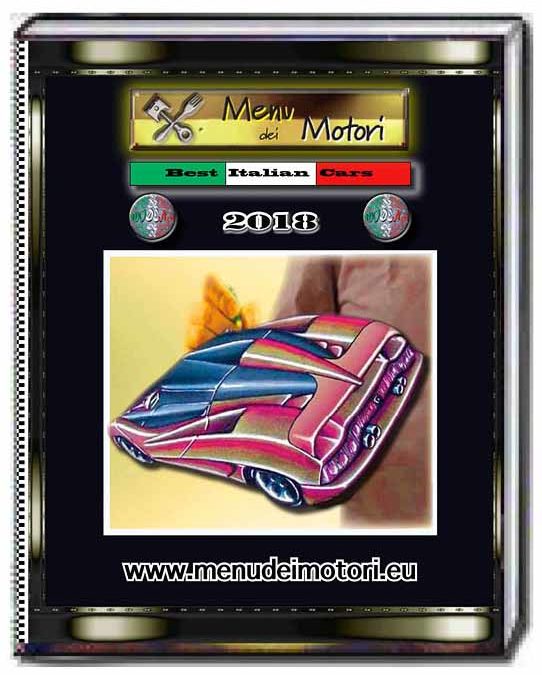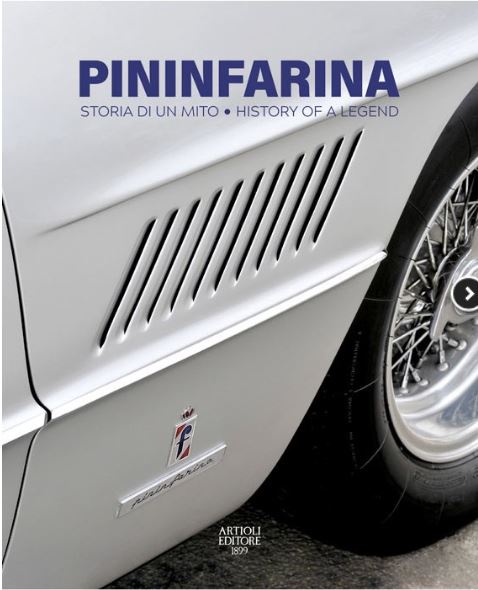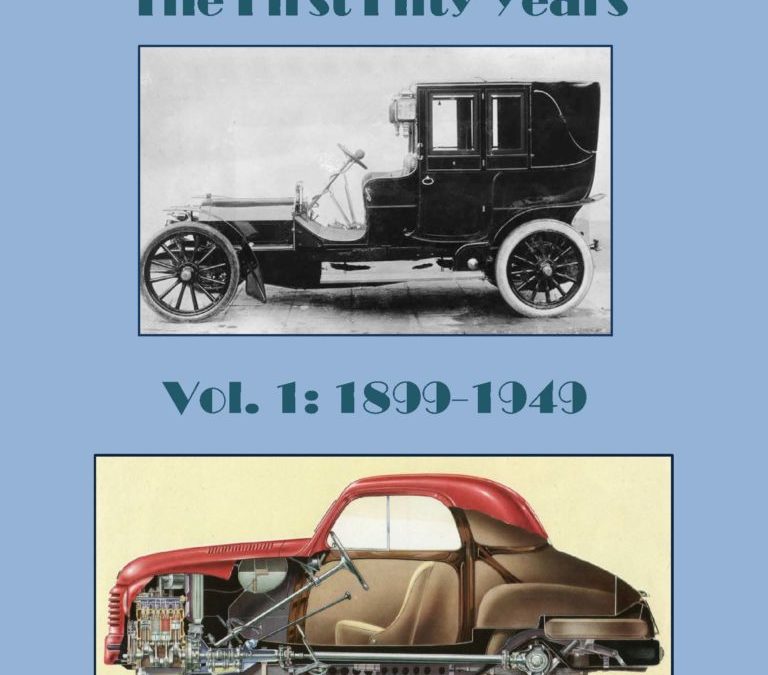
This new book traces the history of the FIAT (Fabbrica Italiana Automobili Torino) company from foundation in 1899, when a group of well-to-do young men decided to found one of the first Italian motorcar manufacturers in Turin, having watched imported French cars putter around and realising their country had no equivalent industry. One of the founders, Giovanni Agnelli, addressed a meeting of fellow-founders on 11th July 1899 thus: “We cannot waste any time. You should have seen what I saw the other day on my trip to Nice. Hannibal is at the gates. In France, even the public sector is starting to use the motorcar.”
Fiat today is a pre-eminent European motor manufacturer producing a wide range of cars to suit every need and budget, cars always cleverly engineered and elegantly styled.
This is volume 1 of 2, a historical survey of 100 years of Fiat cars. The first book covers a fifty year period from 1899-1949, which witnessed the creation of the Fiat businesses and the creation of many innovatively engineered popular cars and trucks as well as aircraft which saw action during two wars.
Competition successes were legion during the period. Fiat attracted brilliant engineers and talented managers, many of whom became legendary names in the annals of motoring history. Without their creative genius, knowledge and skills the company might not have gotten where it is today- bumpy thought the road has been many a time.
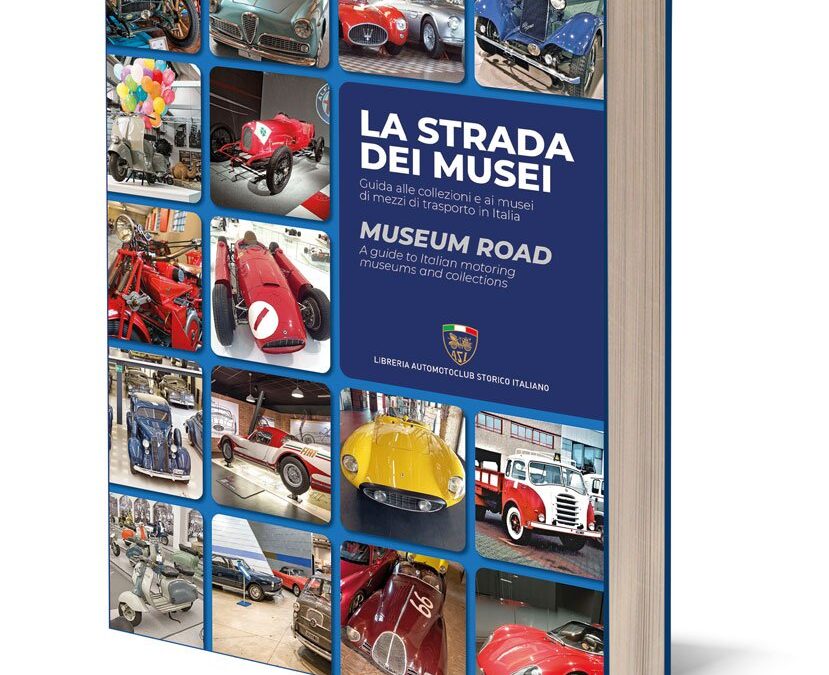
Guide to the collections and museums of transport in Italy
The “Strada dei Musei” is a project of the Historic Automobile Club of Italy.
In this volume eight years of research has created a comprehensive directory describing and documenting over 250 collections and museums dedicated to cars, motorcycles, trucks, agricultural vehicles, planes, trains, boats, bicycles and carriages. The objective of the work is to offer an overview of the numerous resources present in the country, the result of passion, dedication, and research. Some collections are more known, others less known but all make a significant contribution to the history of the twentieth century. For every location, the book provides addresses, phone numbers, web contacts, thus helping the visitor to discover the rich history preserved for all in Italy.
Hardcover 370 Pages
Text English and Italian

What they didn’t want you to know
“We all watched in shock and disbelief when Challenger was lost. Probably no one felt more disappointment and regret than Allan McDonald, who had warned us not to launch that day. His story tells of loss, grief, and the eventual rebuilding and recovery.”–Robert “Hoot” Gibson, former Space Shuttle pilot and commander
“A major contribution to a difficult episode in the history of human spaceflight.”–Roger D. Launius, Division of Space History, Smithsonian Institution
“McDonald tells the heartbreaking tale of how he saw his words of warning ignored, and the fateful consequences of that decision.”–Donald C. Elder III, Eastern New Mexico University
On a cold January morning in 1986, NASA launched the Space Shuttle Challenger, despite warnings against doing so by many individuals, including Allan McDonald. The fiery destruction of Challenger on live television moments after launch remains an indelible image in the nation’s collective memory.
In Truth, Lies, and O-Rings, McDonald, a skilled engineer and executive, relives the tragedy from where he stood at Launch Control Center. As he fought to draw attention to the real reasons behind the disaster, he was the only one targeted for retribution by both NASA and his employer, Morton Thiokol, Inc., makers of the shuttle’s solid rocket boosters. In this whistle-blowing yet rigorous and fair-minded book, McDonald, with the assistance of internationally distinguished aerospace historian James R. Hansen, addresses all of the factors that led to the accident, some of which were never included in NASA’s Failure Team report submitted to the Presidential Commission.
Truth, Lies, and O-Rings is the first look at the Challenger tragedy and its aftermath from someone who was on the inside, recognized the potential disaster, and tried to prevent it. It also addresses the early warnings of very severe debris issues from the first two post-Challenger flights, which ultimately resulted in the loss of Columbia some fifteen years later.
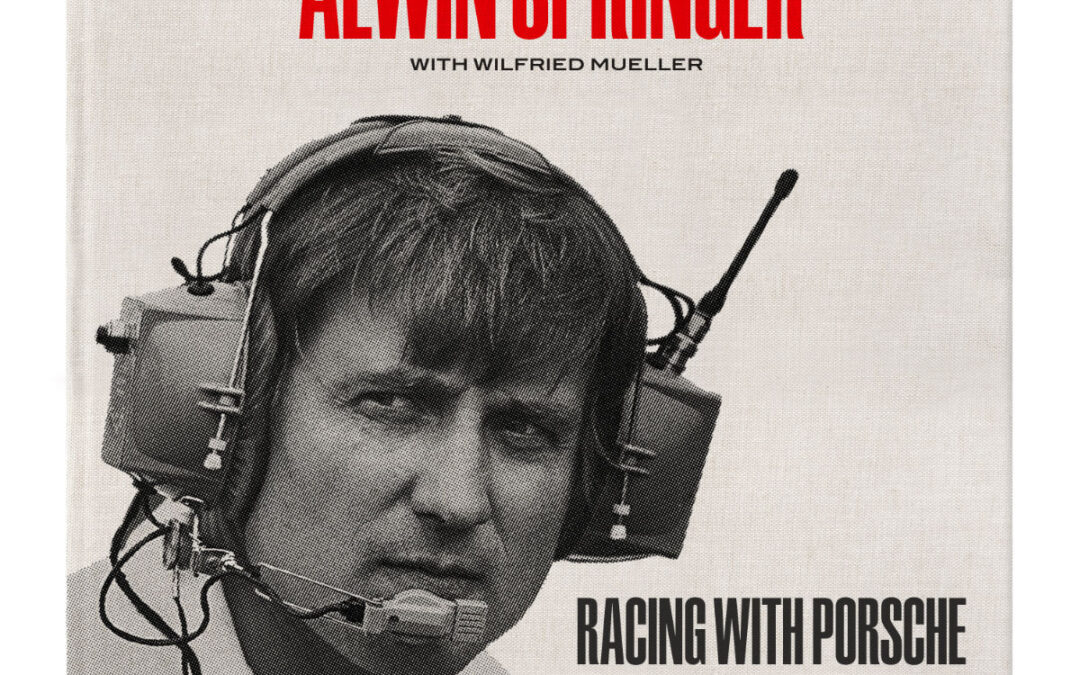
Growing up in the Ruhr area of Germany, Springer emigrated to Canada in the 1960s, but soon settled in California due to the warmer weather. There, after further improving his skills, the trained car mechanic/electrician found a job with Porsche specialist Vasek Polak and from then on looked after Polak’s Can-Am race cars as a mechanic.
Later, Springer started his own venture Andial with former Polak colleagues Arnold Wagner and Dieter Inzenhofer. The now-legendary tuning company went on to compete successfully in IMSA and, with the Andial engines, enjoyed quite a bit of success in other racing series as well. Andial became the number one address for Porsche customers in the USA, and even at Le Mans, customers of the German marque started using Andial engines. The secret of the California-based German trio: they had entrusted a capable man in Silicon Valley with the task of decoding the engine control system of the Porsche factory and thus making all parameters freely adjustable. Alwin Springer and his team perfected their set-ups in hours of test-bench runs. Morever, Springer also had a key role in the relaunch of Porsche Motorsport North America at the end of 1989 and is still active as a consultant for PMNA today.
Alwin Springer, together with Wilfried Müller, summarises his experiences from Can-Am, IMSA and the modern era at PMNA in 47 entertaining chapters, accompanied by countless photos from his private collection dating back to his early years with Vasek Polak.
Hardcover with slipcase
Limited to 963 copies, individually numbered
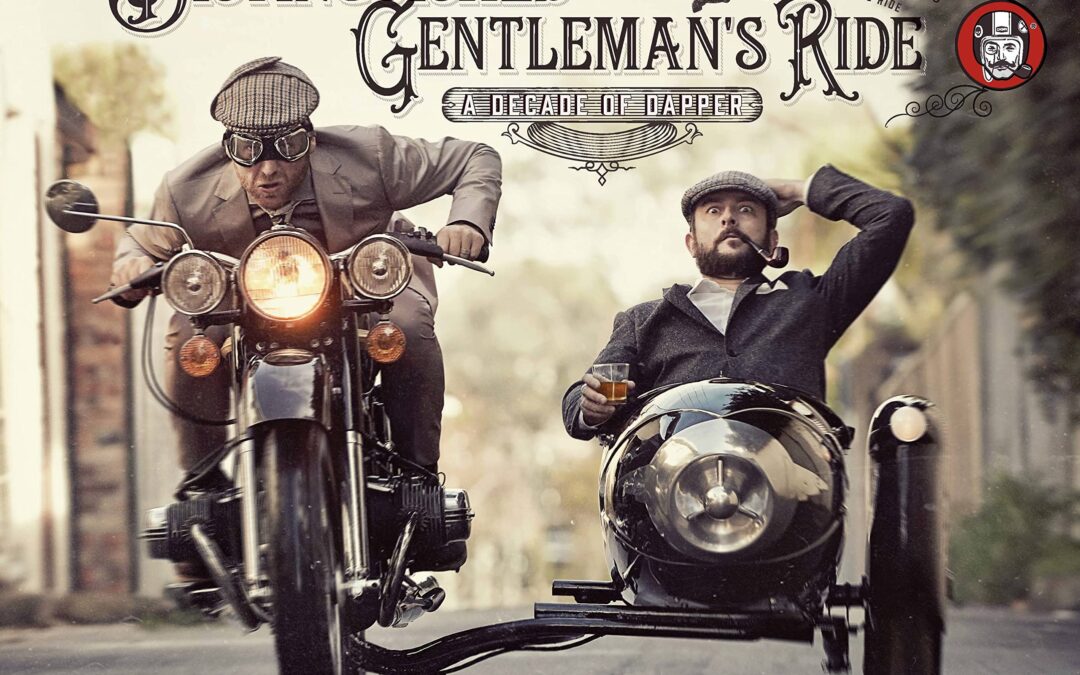
The Distinguished Gentleman’s Ride: Decade of Dapper documents and celebrates 10 years of raising funds and awareness for men’s health initiatives with engaging stories and gorgeous photography. Starting from the simple, joyous act of riding a motorcycle, The Distinguished Gentleman’s Ride (DGR) has united hundreds of thousands of smartly dressed gentlefolk around the world on classic and vintage-style motorcycles to raise
over $35 million for prostate cancer and men’s mental health initiatives. The annual event has attracted the world’s attention and created some truly amazing stories (and thousands of great images) along the way.
The success of the DGR has seen it become so much more than just a charity event. It’s now a kind of global moto family that’s made up of thousands of incredible stories, characters, cities, and ambassadors that are all wrapped up in a kind of motorcycling fashion renaissance. It’s as much about the amazing people that make it happen as it is about the bikes.
The Distinguished Gentleman’s Ride is filled with:
- Engaging stories about the riders and what motivates them
- Dapper fashion and stunning images from dozens of celebrated moto photographers in some of the world’s most iconic locations
- Personal contributions from the likes of actor and TV presenter Charley Boorman, MotoGP world champion Freddy Spencer, and actor Jai Courtney
As a lasting record of the hundreds of stories of triumph and heartbreak from the DGR family, this book brings to life the positive, global impact that motorcyclists have made on men’s health.
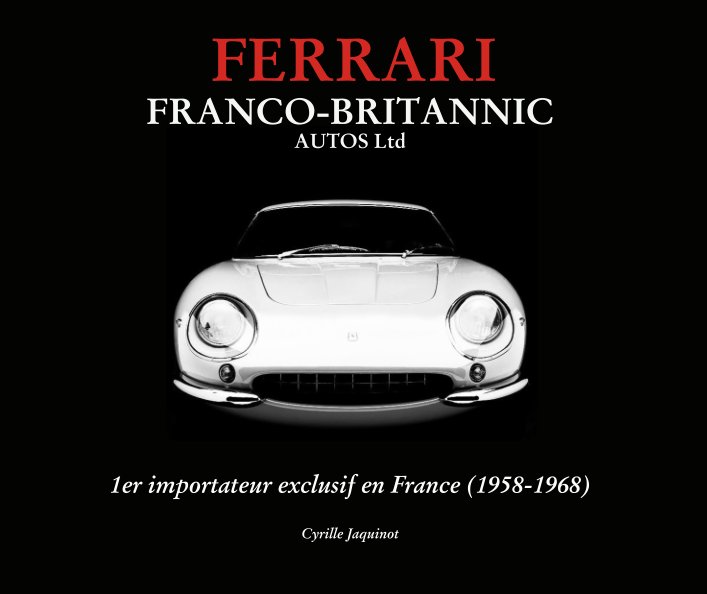
This book on a theme never before addressed is a tribute to the Sleator family, Franco-British family, as well as to all employees, partners, friends and customers of the Franco-Britannic Autos Ltd who, during these 10 years of the import, have promoted the extraordinary image of Ferrari in France…
Certainly the most beautiful Ferrari period in France !
The Franco-Britannic Autos Ltd, thanks to Walter and his son Donald Sleator, imported the most beautiful cars in the world on French soil from 1933 to 1989 for their most demanding customers.
Exclusive importer since 1933 in Paris of the two prestigious British brands Rolls-Royce and Bentley, then importer Rover (and Land Rover), Franco-Britannic Autos Ltd from the autumn of 1958 becomes the first exclusive Ferrari importer in France.
The Franco-Britannic Autos Ltd has experienced this new generation of buyers, the “Nouvelle Vague” as sung in one of his songs a certain Richard Anthony, young film actors, writers, and other artists, businessmen, industrialists … all needed and wanted to stand out by associating their image with that of exceptional automobiles and more particularly Ferrari.
Celebrities such as Jean-Paul Belmondo, Yves Montand, Lino Ventura, Françoise Sagan, Roger Vadim, Mylène Demongeot, Johnny Hallyday, Alain Delon, Claude Francois and many other stars were at one time clients of the Franco-Britannic Autos Ltd. The art of owning a road Ferrari, a very dynamic image, is considered a symbol of professional and social success.
The first Ferrari commercials in France by the FBA Ltd, our French stars of the “Yé-Yé” era, all the Paris Motor Shows, All Ferraris destined for the Marshall during the 24 Hours of Le Mans, piloted by Donald Sleator, then an official pilot until 1967.
There will also be a great tribute to Pierre Noblet with unpublished documents, Sylvain Garant…
Preface and anecdotes of Donald Sleator.
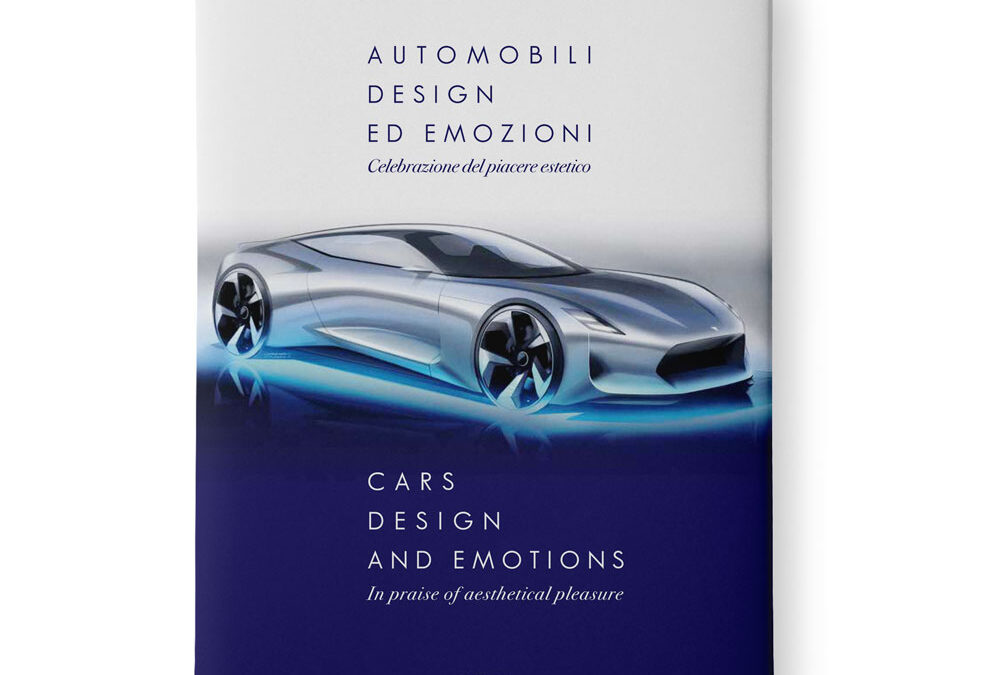
A celebration of aesthetic pleasure
A leading figure in the sector of car design (with important roles in the Peugeot-Citroën Group and at Pininfarina), the author draws his inspiration from the fundamental role that aesthetic gratification has always played in the relationship between man and the automobile.
Among the topics addressed, the birth and evolution of the profession of automotive designer, with extensive historical references, linked to the great ‘coachbuilders’ of the 1920-1960s period and to the evolution of the last 30 years, which led to the creation of the Style Centres of the major manufacturers, no longer integrated and therefore subordinate to technical management.
Starting from personal experience, considerable space is dedicated to the problems and choices that a car designer must inevitably face, reconciling the artistic side with the industrial context in which he operates. Concepts and rules that allow you to see the birth of a model that will be mass-produced, starting from the first sketches on a white sheet of paper. With concrete examples, referring to cars from Citroën, Peugeot, Maserati and Pininfarina.
The book also includes an appendix, dedicated to the most famous car designers of yesterday and today, which allows you to find out who created the style of famous cars, in many cases generically attributed to the manufacturer or the coachbuilder, where the designer himself was working…
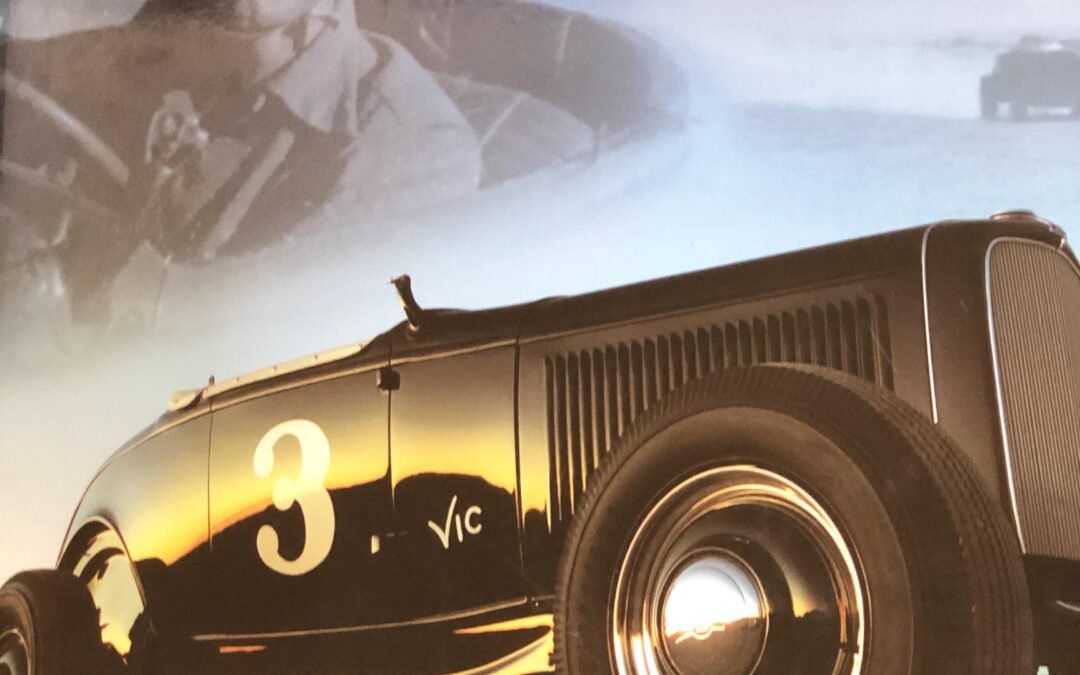
SIGNED to Phil Hill by Vic Edelbrock and Tom Madigan
Tom Madigan, with foreword by Benny Parson, NASCAR champion. The Edelbrock Corporation emerged from a young mechanic’s dream in Southern California during the earliest years of the American love affair with the automobile. One of the central figures of the hot rod culture that began before World War II and blossomed after the war, Vic Edelbrock, Sr. built his company around a simple philosophy: never overextend yourself, and never put your name on a product that hasn’t been tested and proven true. When Vic Edelbrock, Jr. took over after his father’s death, he stayed true to the family philosophy while incorporating progressive marketing plans to grow the company into a corporate giant. It is the last family owned automobile aftermarket company in the industry.Edelbrock Made in USA is the story of the company’s growth from a simple shop at the rear of a gas station to an American institution. It is at the heart of the history of the earliest drag racers and land speed racers, it is woven into the early days of NASCAR, and it flourishes today in the cars owned by enthusiasts and ordinary drivers across America who boast Edelbrock equipment. It is the story of a company whose influence not only helped shape automotive performance, but also led the automotive aftermarket industry in addressing and conforming to the clean air and safety regulations that have emerged over the past 35 years. And it is the story of an iconic family business that has preserved its values and its spirit of independence, creativity, philanthropy, and fun over three generations.

Become an encyclopedia of the iconic Tri-Five Chevy and use the facts, charts, part numbers, and codes compiled in this book to bring your 1955, 1956, or 1957 Chevrolet back to its former glory.
What interior color combos could be had in a Two-Ten Delray Club Coupe? Was fuel injection offered on a ’57 Nomad? How do I decipher my cowl tag? Author Patrick Hill addresses these questions and more fully to assist you in returning your Tri-Five back to its factory stock appearance. This extensive assortment of offerings make a book of this nature a must-have item for hobbyists.
The Tri-Five Chevy is an American classic, just like baseball and apple pie. The three-year run of arguably the most recognizable body style of all time continues to resonate with enthusiasts more than 60 years after these cars were first created. What stands out to most fans besides the styling is the vast number of configurations these cars were offered in. Stripped down (One-Fifty) or dolled up (Bel Air convertible), a Tri-Five could be ordered in as many as 21 different models in 1956.
With the Tri-Five Chevrolet Data and ID Guide: 1955, 1956, 1957, you will have a book capable of fitting in your back pocket that has so much information you will feel as though you were a salesperson at a Chevy dealership in the mid 1950s.
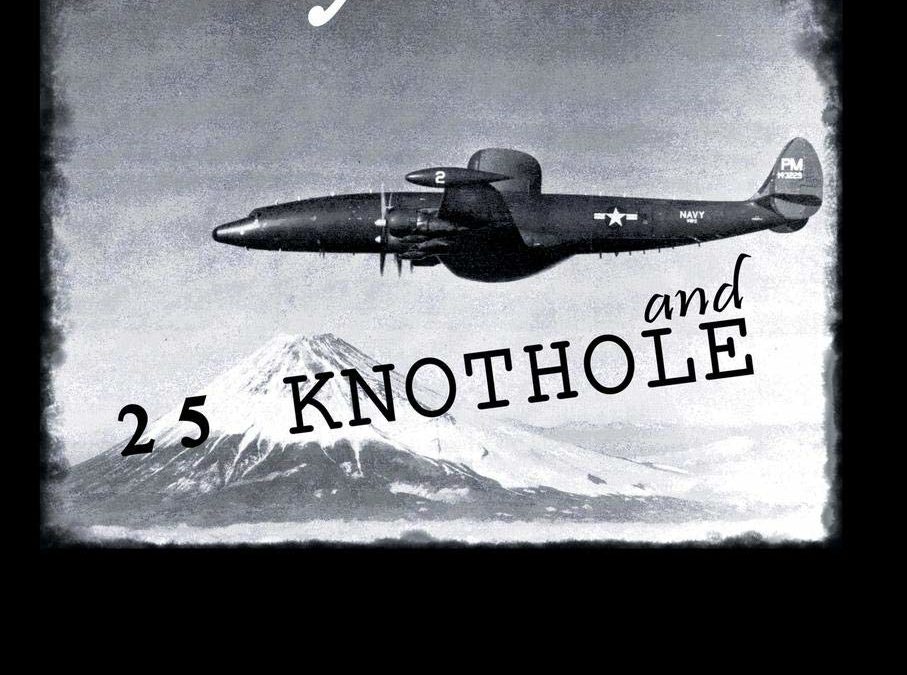
In the early hours of April 17, 1952 World War III nearly began. The Distant Early Warning line (DEW) was still an idea to be addressed by the U.S. government and its top military brass. “Willy Victor and 25 knothole” is about that vital cog of airborne defense against the real threat of a sneak attack (atomic and/ or airborne) against the American mainland. Bruce Jarvis, former naval flight crew member, recounts the operations of his Airborne Early Warning Squadron (AEWRON) experience, flying in a Lockheed Super Constellation Warning Star ( Navy designation Willy Victor-2) in support of the DEW line that became fully operable in the year 1957. It introduces readers to the flyers’ lives during the Cold War, and with little fanfare (but much moxie) recalls the unknown heroism of some of the front line troops in the form of a fictional but typical crew of naval airmen, of the now defunct conflict between Russia and the United States. Although the crew is fictional, their stories are true.
The entire U.S. air defense effort was conceptualized by what is known as the Lincoln Summer Study Group in 1952. It was in response to the panic in NORAD ( the North American Defense Command ) when “bogeys” or aircraft contrails were spotted near northern Canada-the U.S. had neither warning nor the means to combat its threat, if any. Had Kruschechev so chosen, the bogeys could have been the vanguard of a Russian first strike on the heart of America. The stories in “Willy Victor and 25 knothole” include purposes of the AEWRON missions, their importance, the people who flew them, personal anecdotes, their ground crews, their families and women and their sad or happy moments. It shows the human face of a war mostly fought in the rarefied scientific/technological and secret ops realms. Bruce Jarvis has taken good care in writing this book so that Americans may know and not forget the few good men who put their lives on the line during the cold war to protect the United States of America.
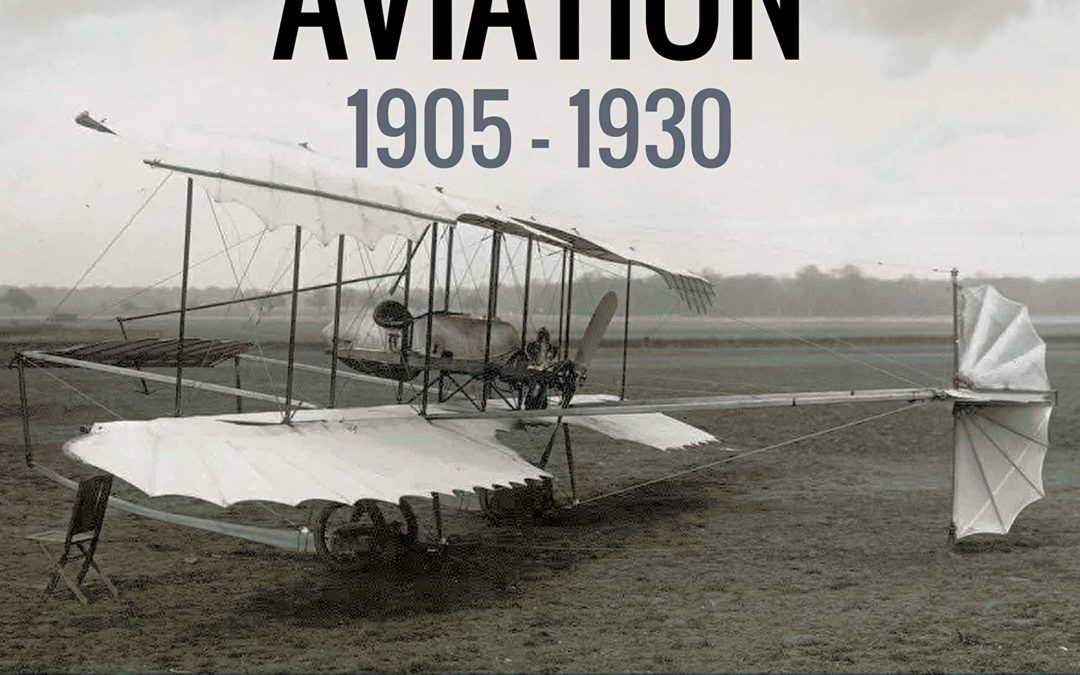
France has been called the cradle of aviation by many – a fact that cannot be disputed, although some have tried. By the end of the 19th century, she led the world in lighter-than-air flight. Any concern about heavier-than-air flight was dismissed as inevitable, and France would achieve it in due course. By the time Blériot bravely enquired ‘Which way is England?’ the country was ready to redress any perceived shortfall. Besides leading European aviation, France was the nation that named all the parts of an aeroplane with words many of which we still use everywhere today.
France was also the first nation to stage air exhibitions. Unlike their counterparts in Britain, Germany and America, French designers were thoroughly entrepreneurial and tried a wide variety of adventurous styles from pusher to canard and monoplane to multiplane. In 1909 the first Air Show was held at the Grand Palais. The ‘Exposition Internationale de locomotion aérienne’ ushered in what was to become an enduring tradition. Every year, the aircraft exhibitions were a massive success. The interior design by André Granet, who since his youth had been fascinated by flying, was such a success that the Automobile-Club subsequently commissioned Granet to do the same for the car shows.
It is not surprising that all this derring-do, all these technological achievements and all this innovation drew reporters and photographers like moths to a flame. The men, the machines, the places and the events all were recorded, reported, reproduced and then were filed away. Hundreds of images appeared in print, but thousands were printed up only as contact prints from large-format glass negatives and then disappeared into albums to be forgotten about. In the mid-1990s the author came across one such treasure-trove; a number of dust-covered albums containing around five hundred images of aircraft, airships and expositions – it is doubtful if most have appeared in print before, so this will probably be the first time the events of these French pioneers have ever been showcased.
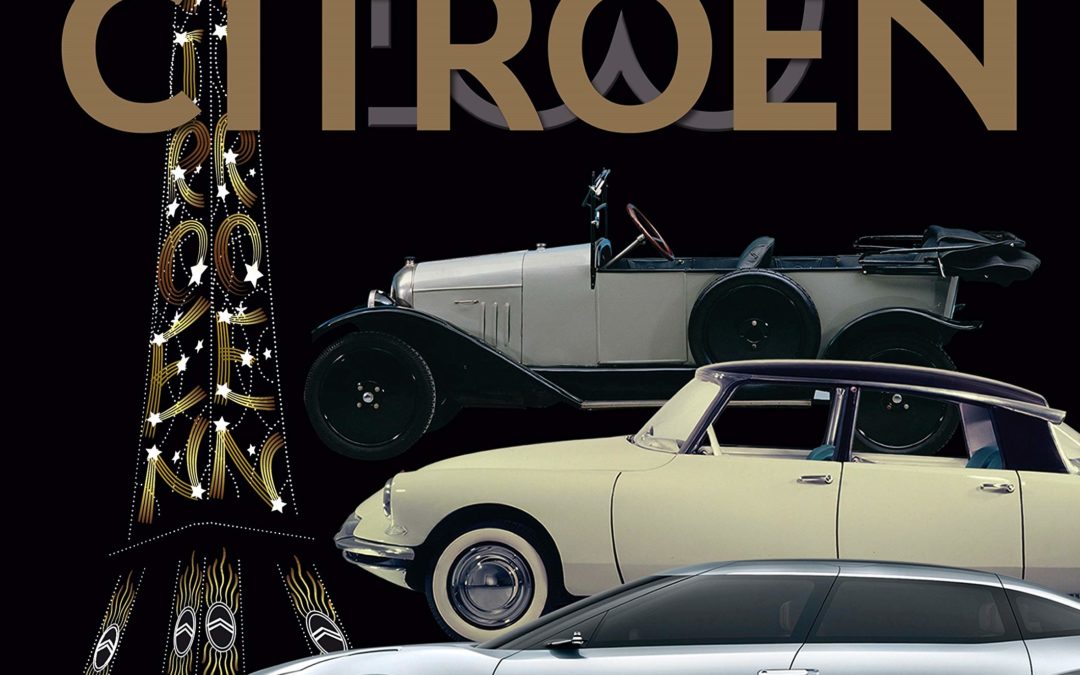
Citroën is about to begin its second century of existence. This is an opportunity to revisit the first hundred years of this unique brand, marked by creations that have revolutionized the history of the automobile, and punctuated by events and outstanding personalities. This wonderful story is here addressed through themes that have enrolled in France and around the world in multiple areas. The Citroën brand leaves its mark well beyond the world of the automobile. In addition to the technical, aesthetic, commercial and industrial innovations that have marked it, the life of the double chevron is now intimately associated with the transformations of society, lifestyles, arts, economy, sport and geopolitics. ..
FRENCH TEXT

Land Rover Series I-III is the mechanic in your glove box, essential for troubleshooting, identifying issues and suggesting roadside fixes for 101 common problems associated with Series Land Rovers – both on and off-road.
The user-friendly layout incorporates extensive cross-referencing, helping you rapidly diagnose a problem. Remedies for everything from sudden engine failure through unusual sounds and smells are provided in topic-specific chapters, and all standard petrol and diesel engines are covered, with the exception of the V8. Some Land Rover models have their own specific weaknesses and these are also addressed, with thorough advice provided for permanent and more expensive repairs, and tips on preventative maintenance. Featuring innovative temporary fixes learnt from years of on and off-road driving, plus over 100 diagrams and photograph, this book can help get you and your Land Rover back on the tarmac – or save you a long walk through the bush.

Why do aircraft fly? How do their wings support them? In the early years of aviation, there was an intense dispute between British and German experts over the question of why and how an aircraft wing provides lift. The British, under the leadership of the great Cambridge mathematical physicist Lord Rayleigh, produced highly elaborate investigations of the nature of discontinuous flow, while the Germans, following Ludwig Prandtl in Göttingen, relied on the tradition called “technical mechanics” to explain the flow of air around a wing. Much of the basis of modern aerodynamics emerged from this remarkable episode, yet it has never been subject to a detailed historical and sociological analysis.
In The Enigma of the Aerofoil, David Bloor probes a neglected aspect of this important period in the history of aviation. Bloor draws upon papers by the participants—their restricted technical reports, meeting minutes, and personal correspondence, much of which has never before been published—and reveals the impact that the divergent mathematical traditions of Cambridge and Göttingen had on this great debate. Bloor also addresses why the British, even after discovering the failings of their own theory, remained resistant to the German circulation theory for more than a decade. The result is essential reading for anyone studying the history, philosophy, or sociology of science or technology—and for all those intrigued by flight.
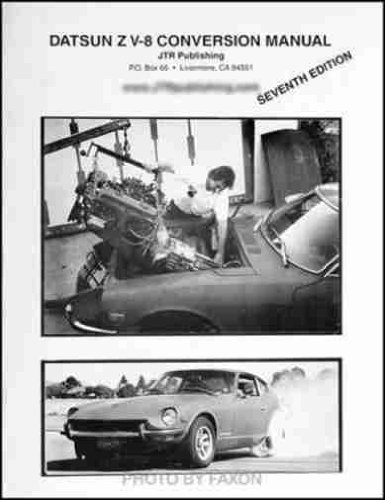
DATSUN Z-MODELS – 240Z, 260Z, 280Z COMPLETE , STEP-BY-STEP V-8 SMALL BLOCK CHEVY ENGINE CONVERSION MANUAL – GUIDE V-8 – FULLY ILLUSTRATED 1970 1971 1972 1973 1974 1975 1976 1977 1978 “Datsun Z V-8 Conversion Manual” by Mike Knell. This book shows you how to install carbureted small block Chevy V-8s into Datsun Z series cars. You’ll find invaluable advice on how to choose and buy a good V8 for your conversion, from a Chevy, or Buick, Olds, or Pontiac. The author will lead you through your project in by outlining the elements of the system, and then giving tips on installation as well as suggestions for modification. You’ll see chapters on brackets & motor mounts, engine dress, transmissions (automatic & manual), engine compartment, electrical(the book doesn’t include wiring diagrams, for which you’ll need a shop manual), tachometers & ignition, speedometer, cooling system, fuel system, exhaust, suspension, air conditioning. You’ll also see a chapter on how to make your conversion conform to California smog laws. The book shows you how to put V8s into 1970-1978 Datsun Z models, including the 240Z, 260Z, and 280Z. This new condition softbound book measures 8 ½ x 10 ¾ inches, and has over 200 pages. This most current 7th edition is copyrighted 2004. If you’d rather work with a fuel injected engine, see my other items for the Chevy TBI & TPI engine swapping book. You’ll save yourself loads of time and headaches by benefiting from the author’s years of knowledge and experience in doing these conversions.
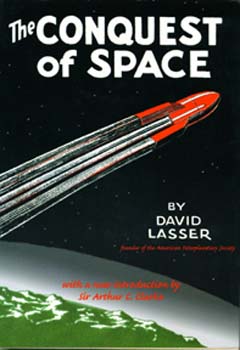
“David Lasser stands as one of the least-known but extraordinary pioneers of spaceflight. In 1930 he founded the American Interplanetary Society (today’s AIAA) – the same year he wrote this book – the first book ever written in the English language to address the notion of spaceflight as a serious possibility.
This book has not been in print since 1931 and yet it still stands up to scrutiny. The lucid style with which Lasser explains the basic concepts of rocketry make it a delight for anyone to read. Only a handful of errors creep into the text and all of those were based on the best information available at the time. The Conquest of Space is a milestone work of spaceflight literature and was state of the art in 1931. No space enthusiast’s library is complete without it.”
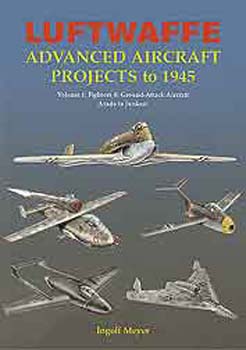
“Among Midland’s most successful aviation books have been the three Luftwaffe Secret Projects titles. Ingolf Meyer, the artist who worked on Luftwaffe Secret Projects Volume 1 Fighters 1939-1945 has, since the publication of that book, continued his research into German experimental aircraft in the era of the Third Reich. He has unearthed a remarkable range of further secret projects and experimental aircraft which did not appear in the earlier volumes. This huge archive of research will now be published in an estimated four volumes over the next few years, starting with this book.
This work covers fighters, night-fighters and attack aircraft, alphabetically by manufacturer. This first volume will cover aircraft, projects and designs produced by manufacturers from Arado through Junkers, while the second volume will cover those from the manufacturers Lippisch to Zeppelin.
Over the course of this new series, approximately 40 percent of the aircraft discussed and illustrated will not have appeared in the original series. In order to address the many new aircraft featured in these books, their style will be markedly different from the earlier volumes. They will contain more illustrations and less text. Normally one aircraft will be covered on each page. For many, it was the illustrations which made such an impact when Luftwaffe Secret Projects was first published. Increasing the number of illustrations in the new series will only enhance the appeal of these books.”
A highly illustrated history of German experimental secret project fighters and ground-attack aircraft in alphabetical order starting with those manufactured by Arado and ending with Junkers. This first volume in a new series reveals a remarkable range of secret projects and experimental aircraft that did not appear in the very popular Luftwaffe Secret Projects series. Aircraft, projects and designs are detailed, with approximately 175 color illustrations. Historians, aviation enthusiasts, and modelers will find this book a valuable resource.
